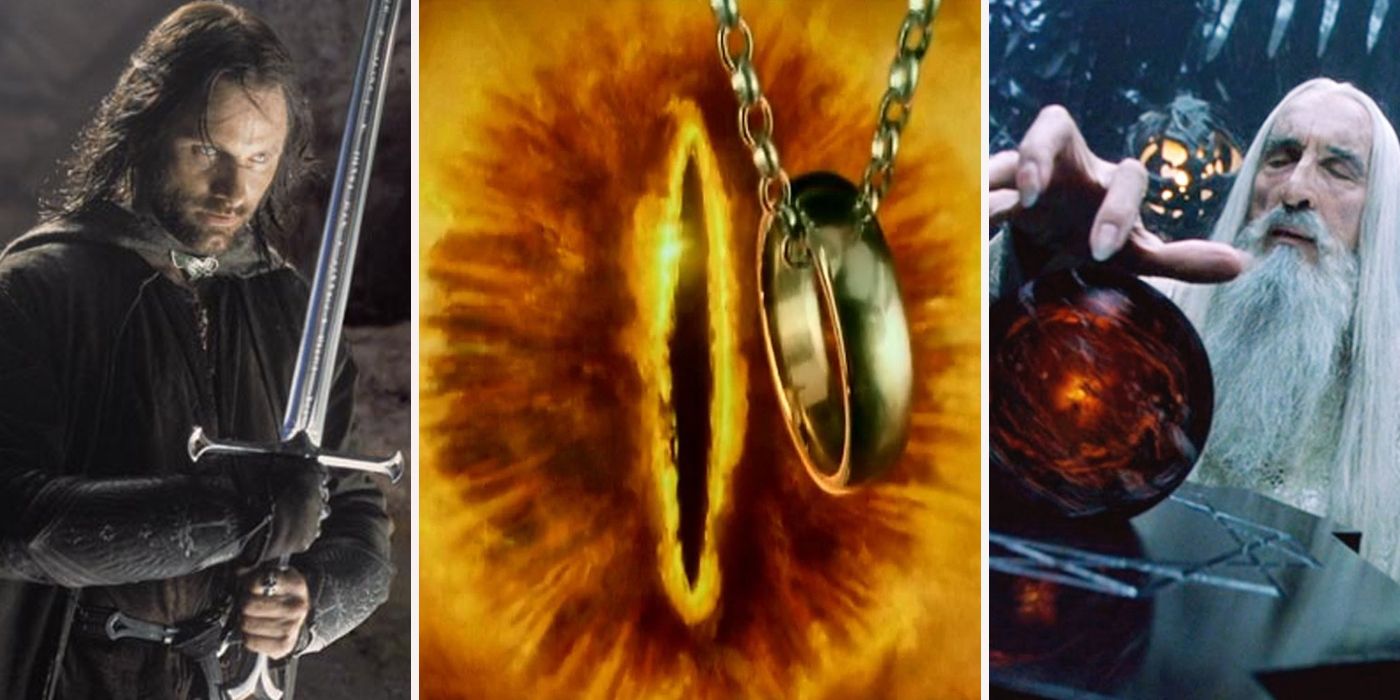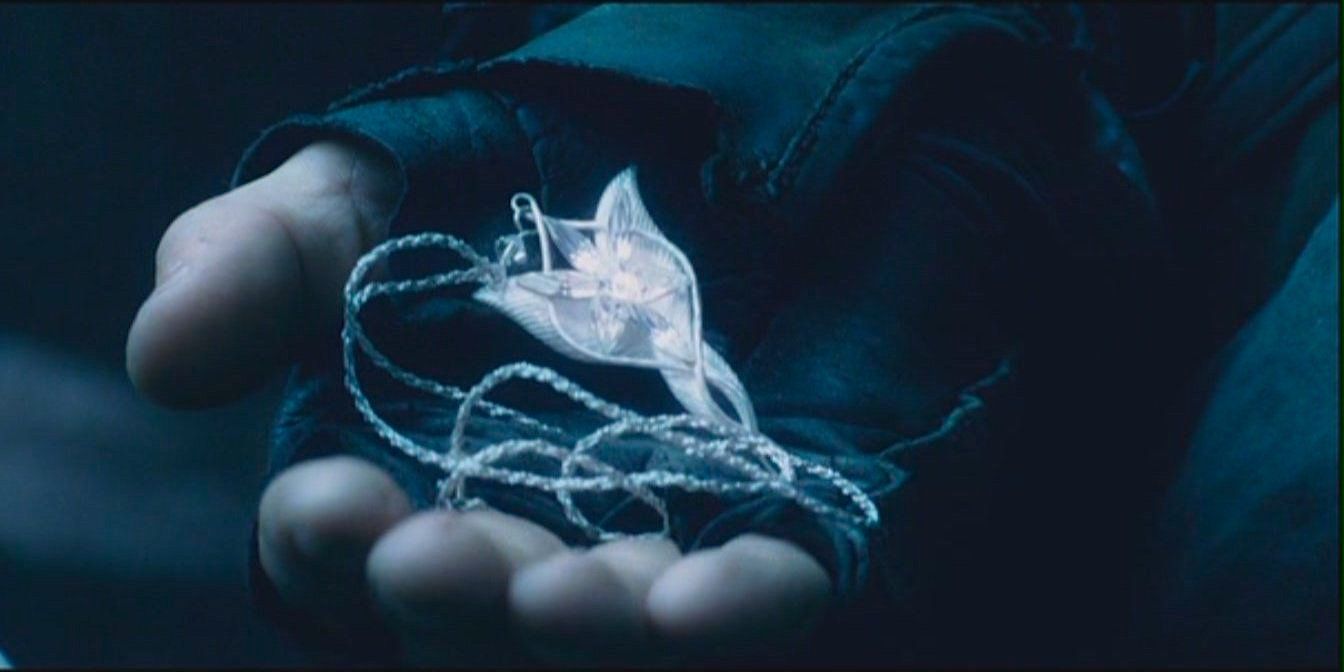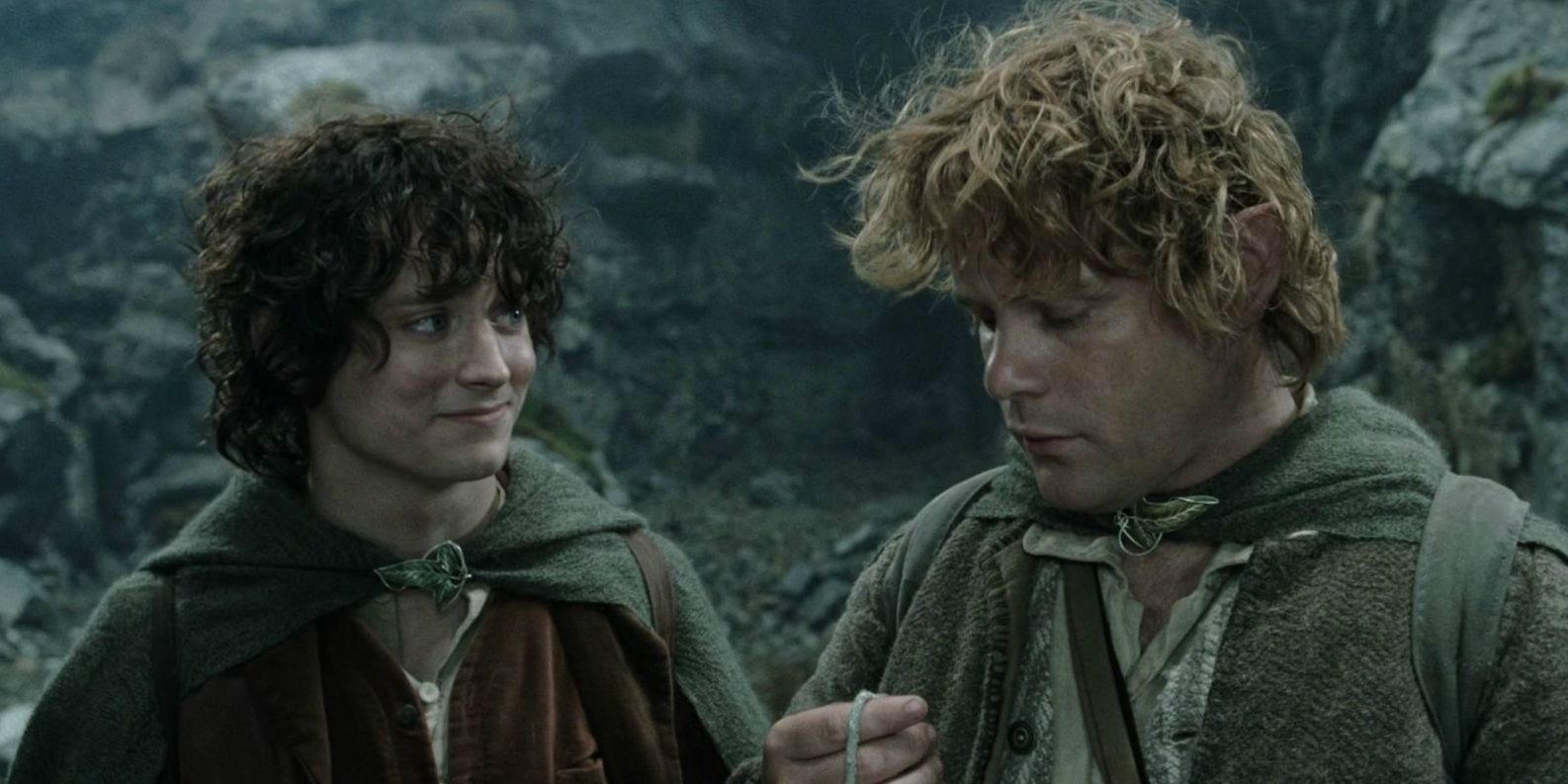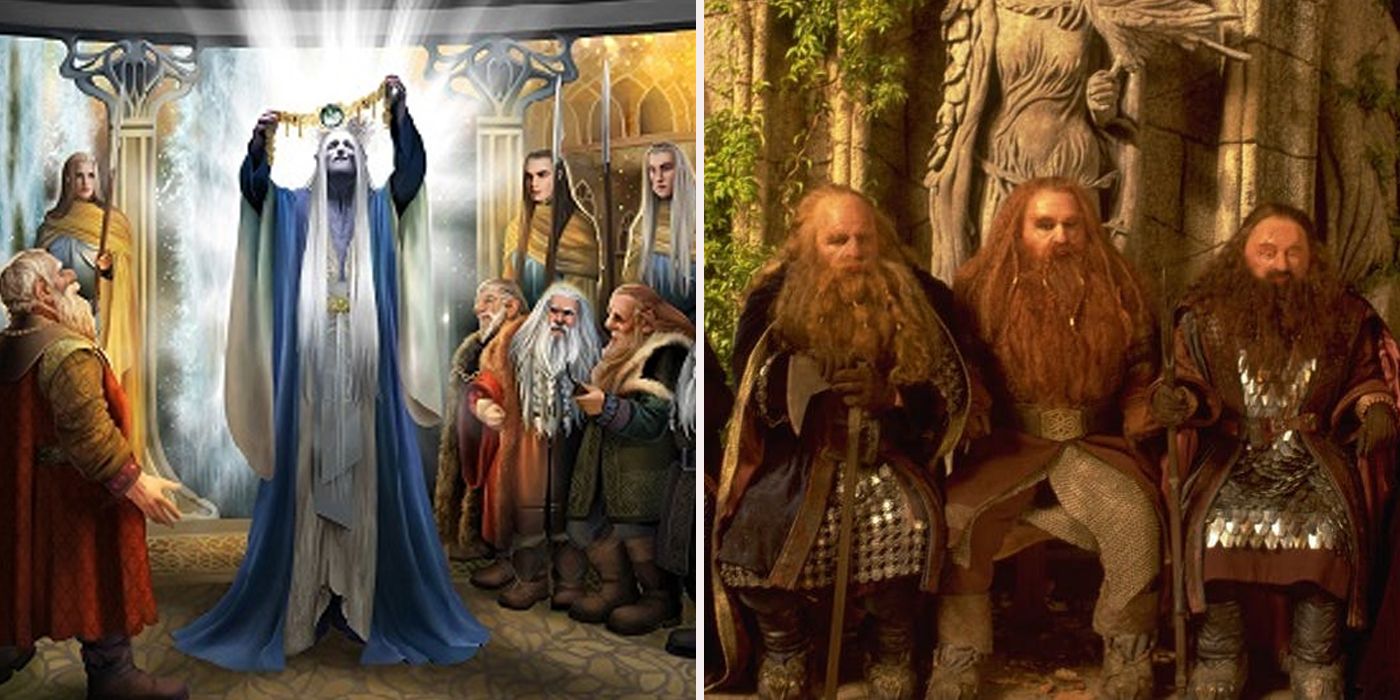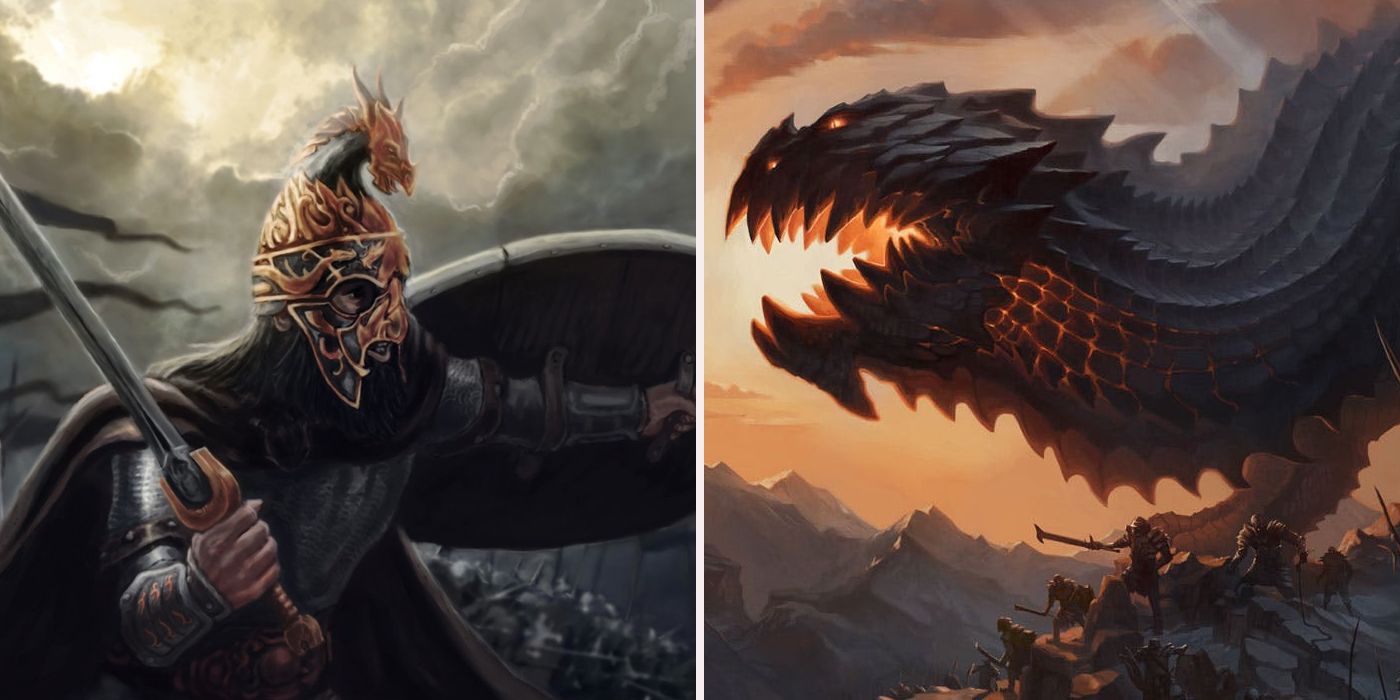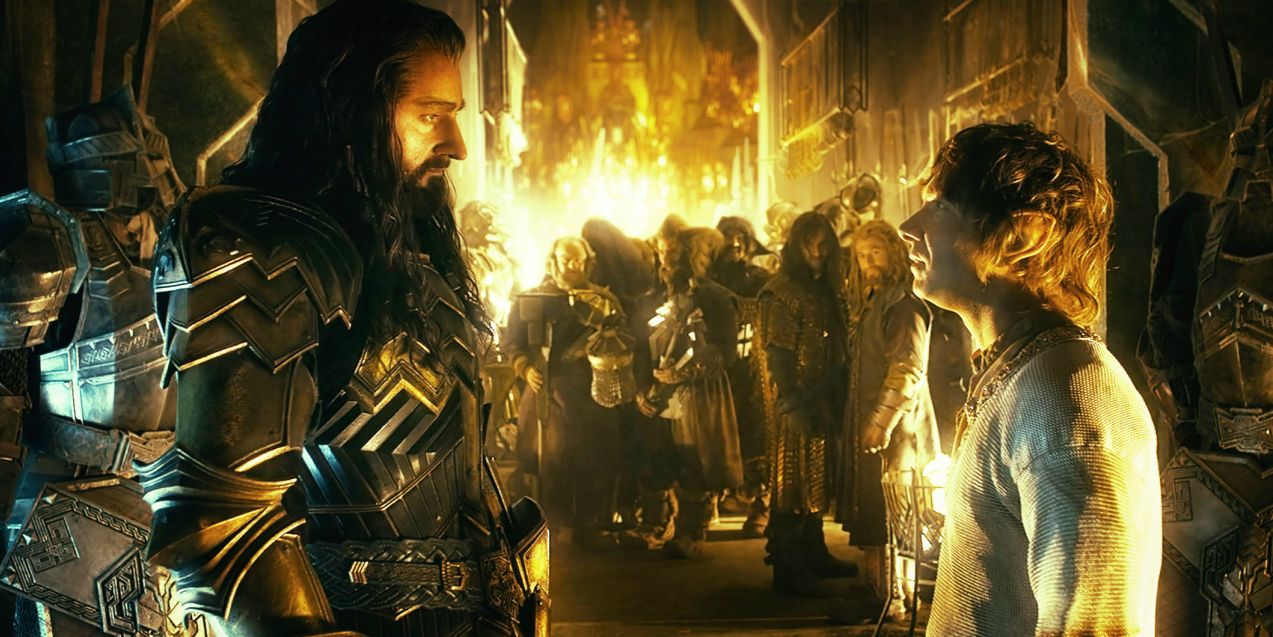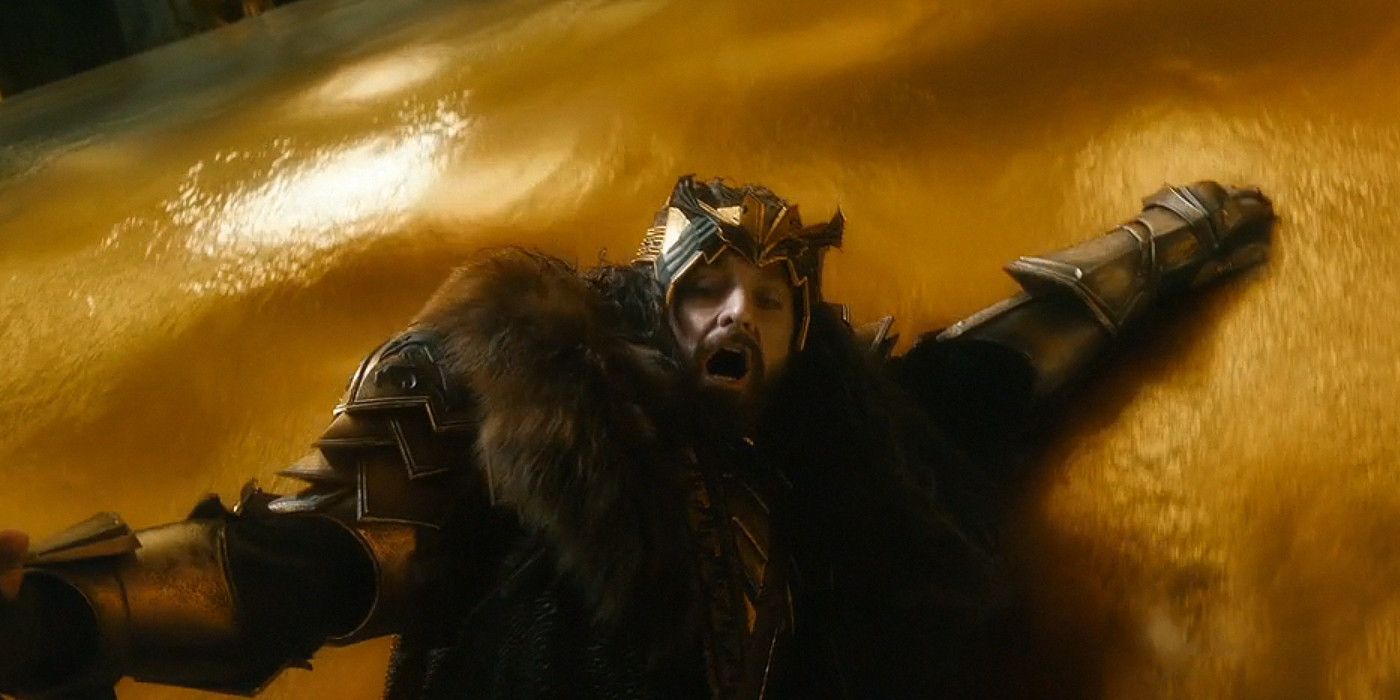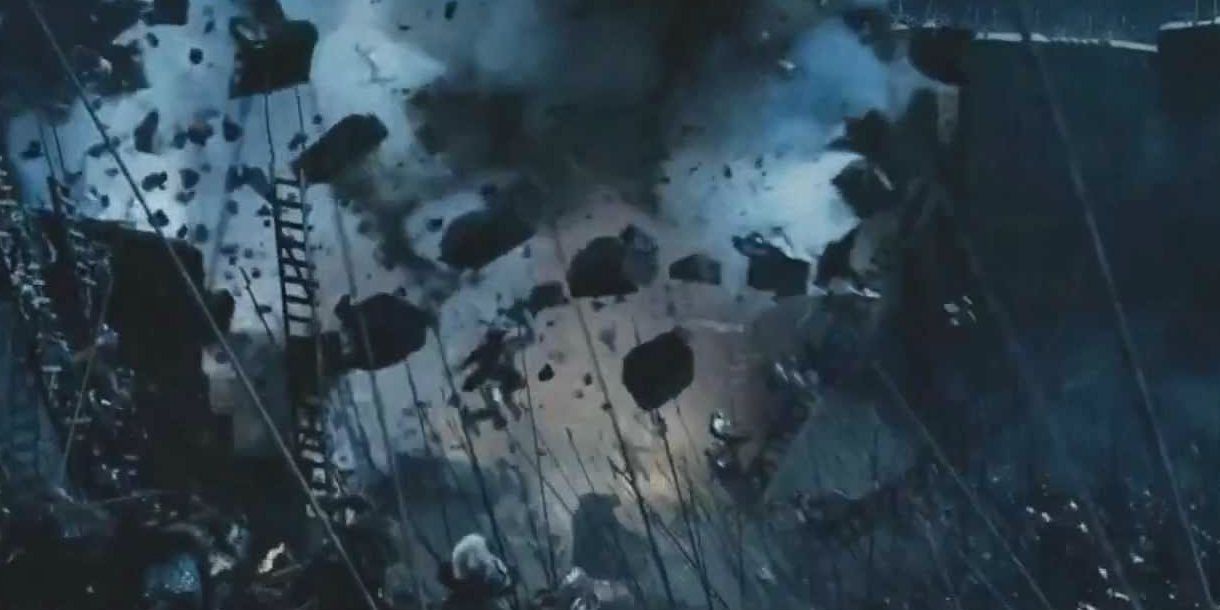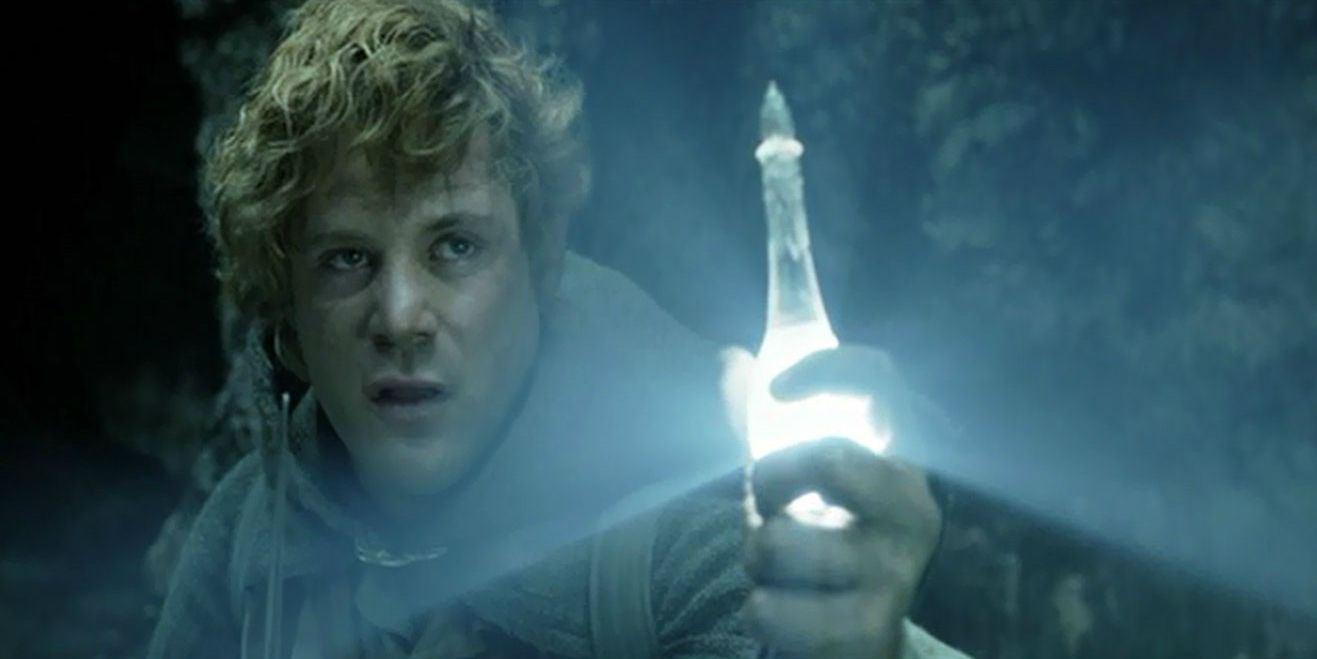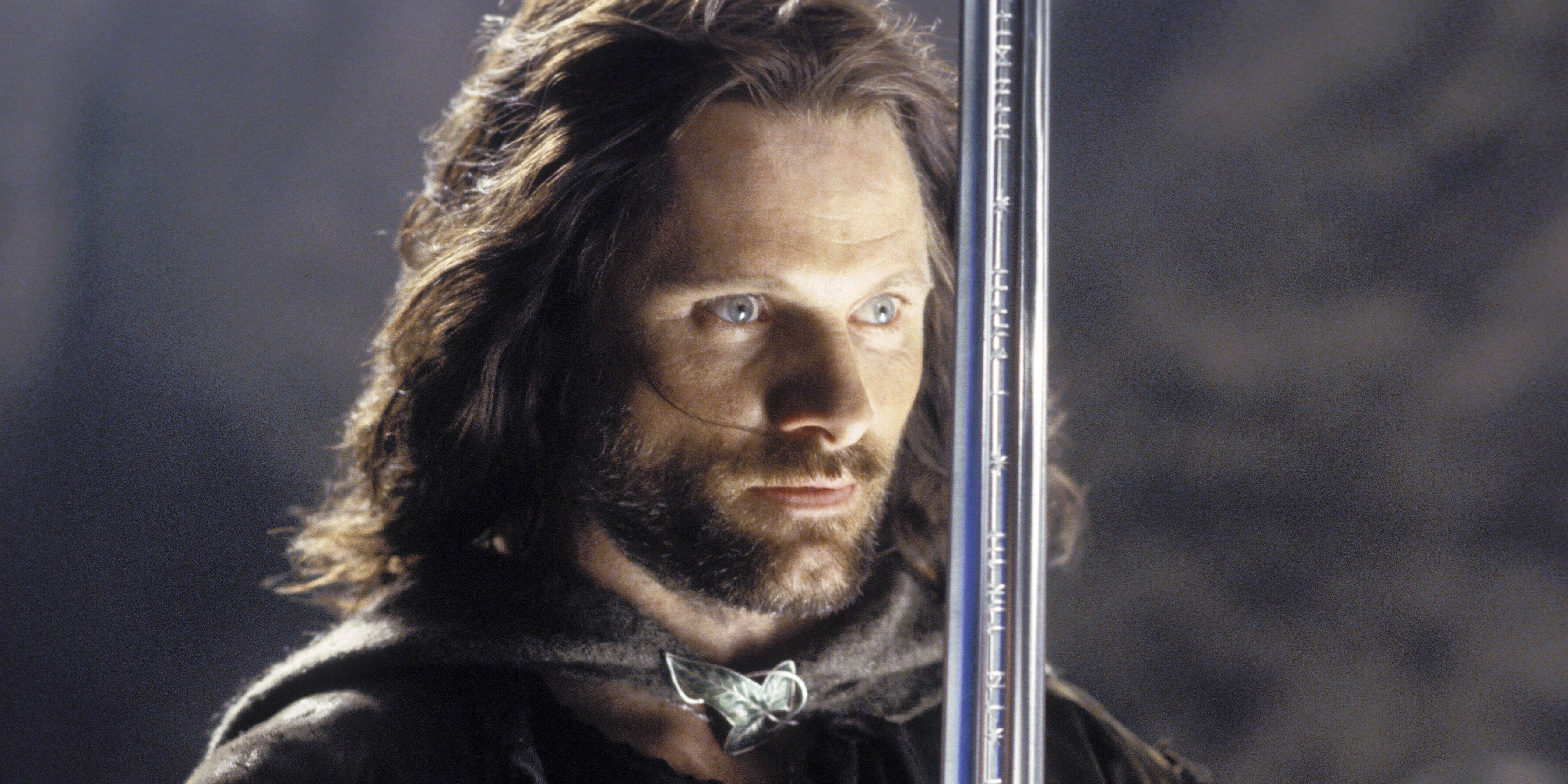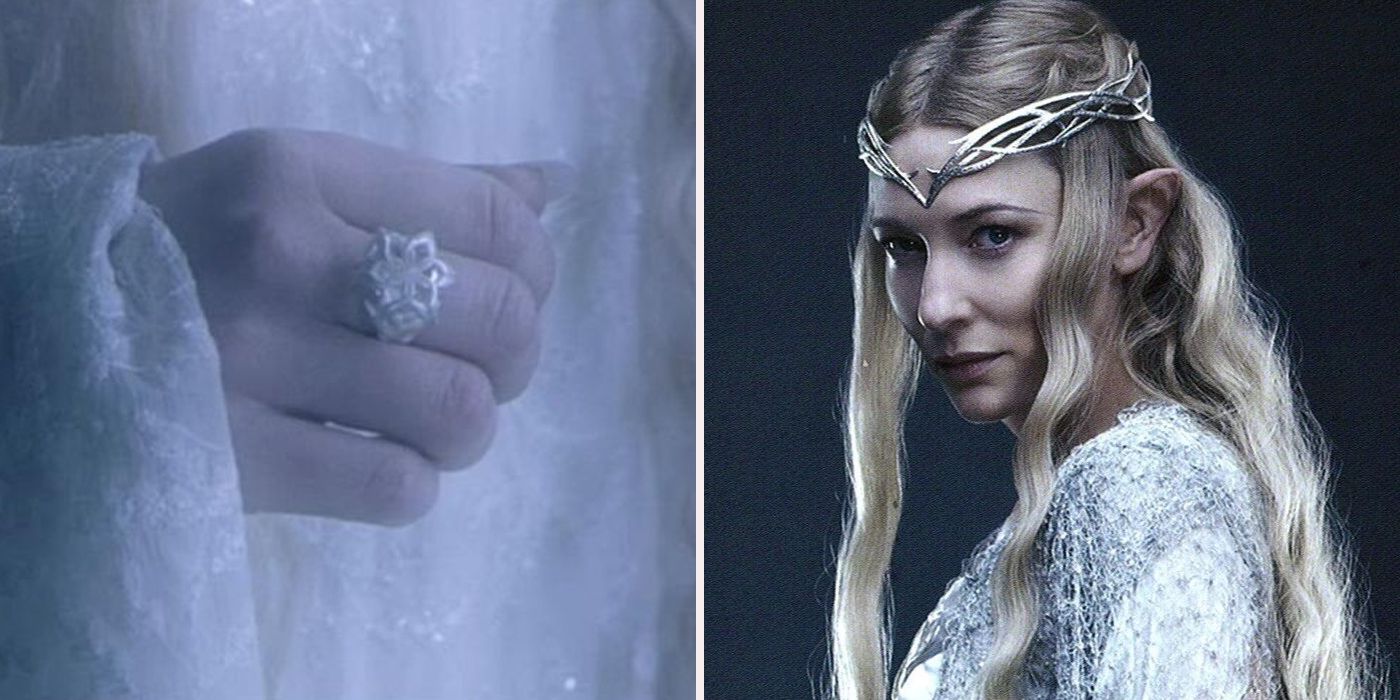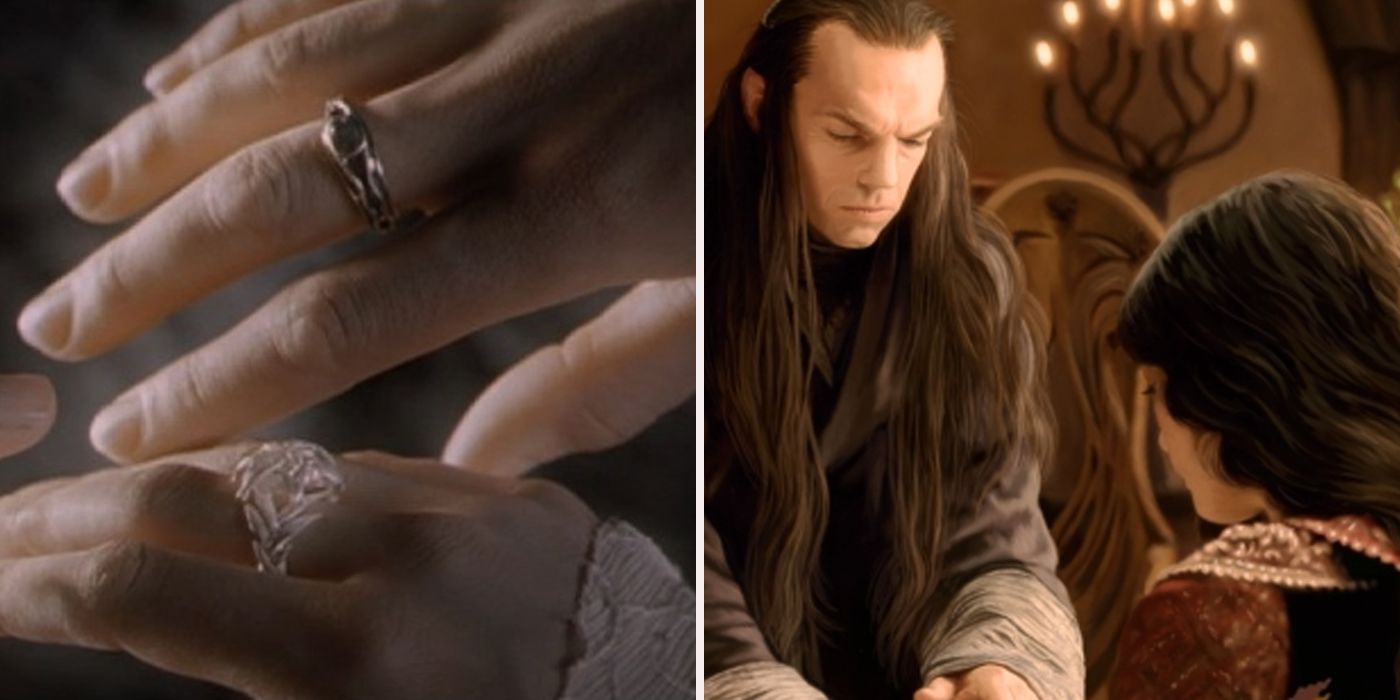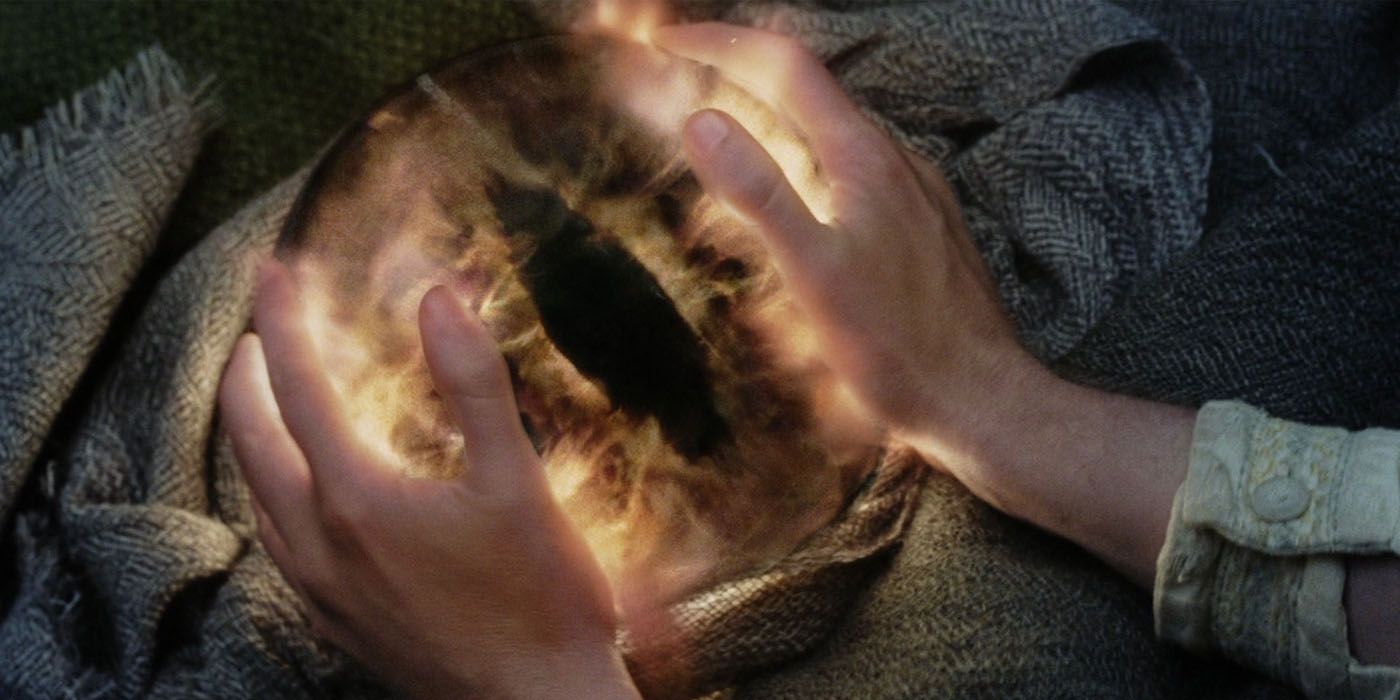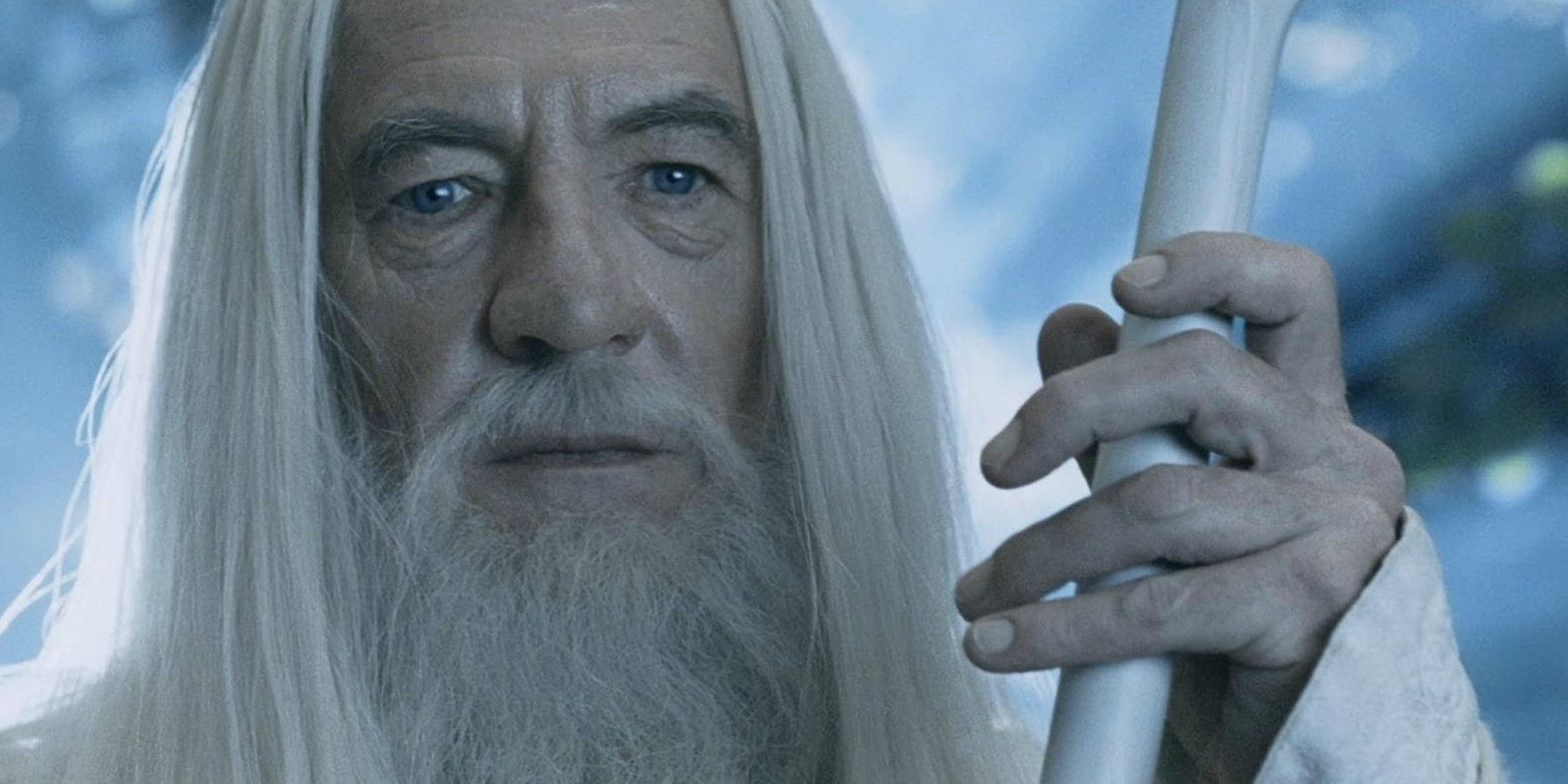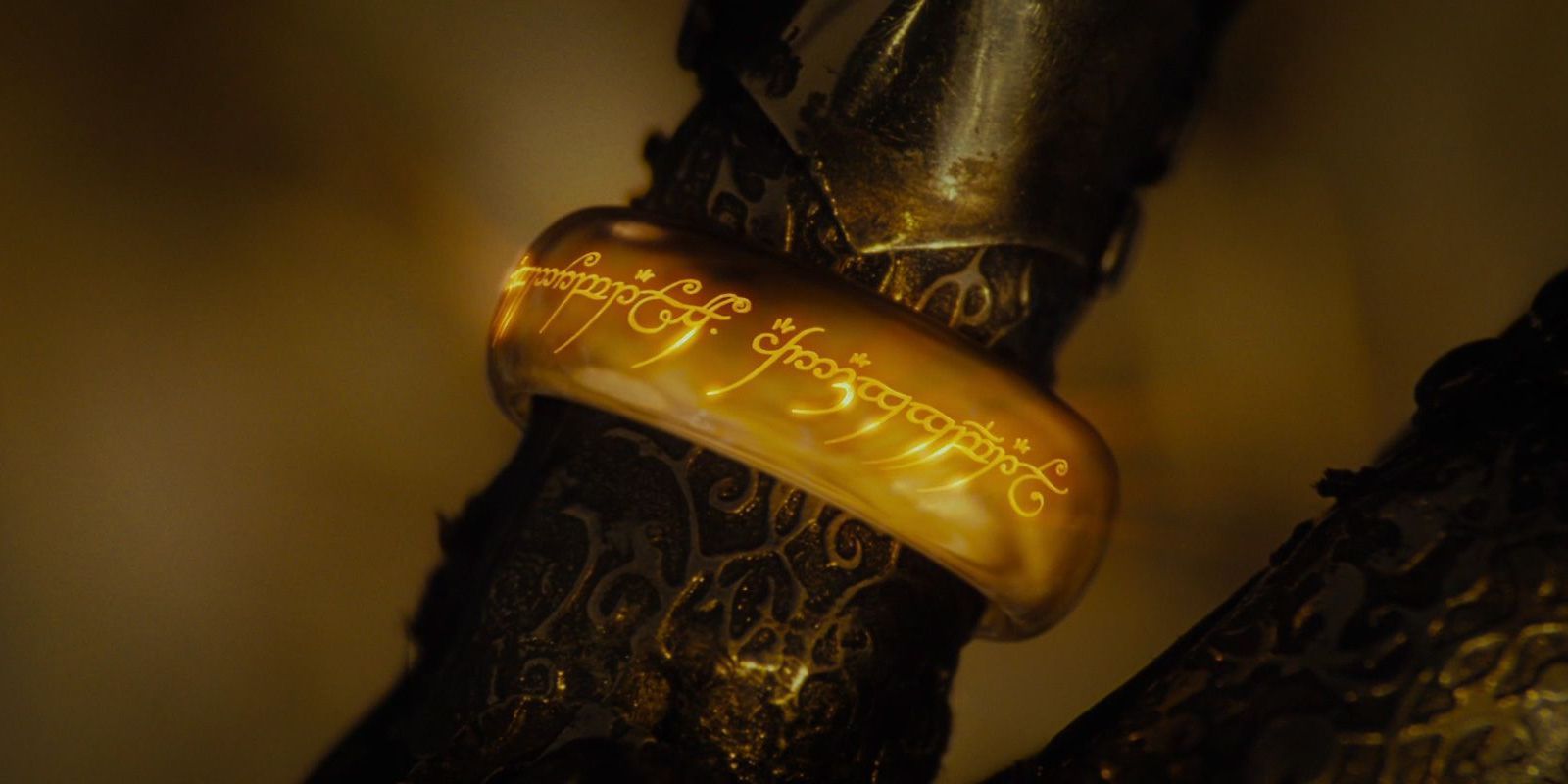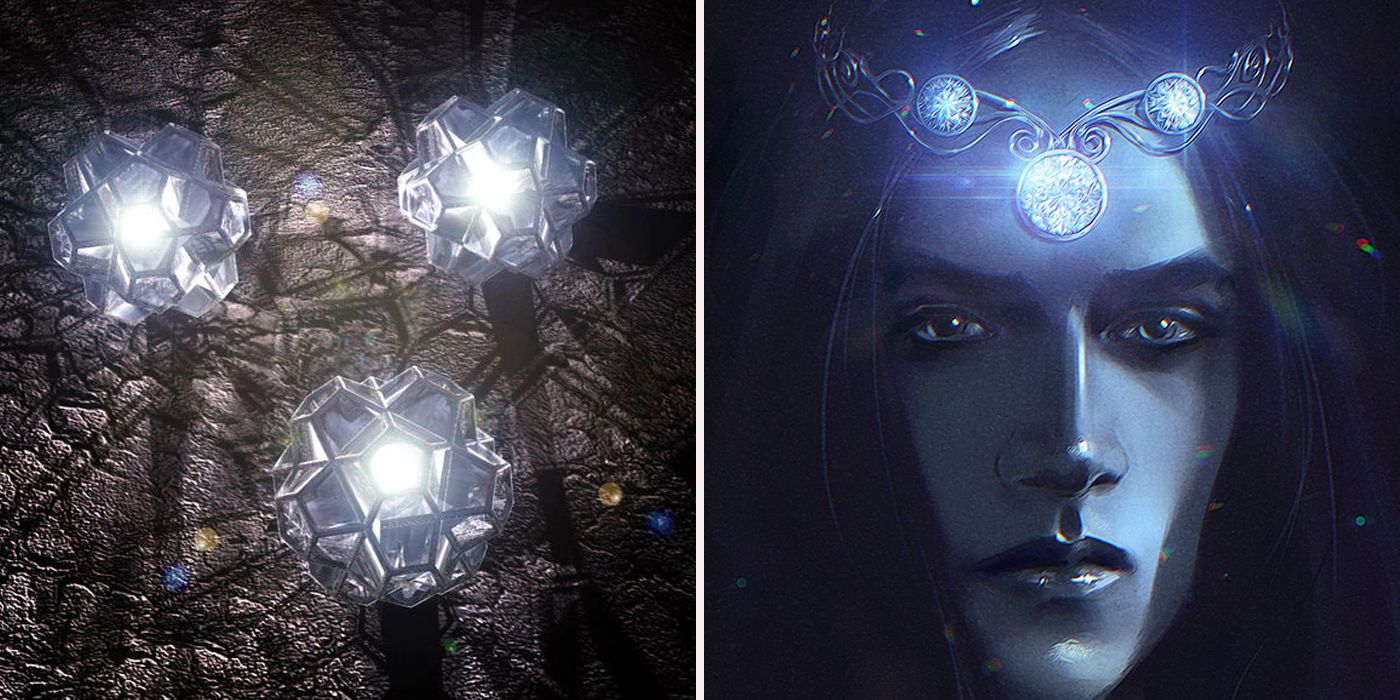J.R.R. Tolkien’s The Lord of the Rings and the accompanying stories of Middle-earth are some of the most influential fantasy works ever. They set up tropes and precedents that countless subsequent works have either emulated or departed from.
Thanks to The Lord of the Rings, and also Peter Jackson’s academy award winning movie adaptations, Elves, Orcs, Dwarves, Hobbits, and Rings of Power are all household names.
One particular trend that The Lord of the Rings help codify is the fantasy story that revolves around magical items-- items with special properties, great significance, or magical powers that both a protagonist and antagonist have great interest in.
Such items tend to be very old and come to our main characters with long and mythic backstories. If the right people use the power of these objects at the right time, the story will move forward and the day will be saved.
In the case of The Lord of the Rings, many such objects come to mind. However, how do they compare to each other in terms of power and significance? How do the Rings of Power stack up to each other? Which is the most powerful piece of heirloom weapon or armor?
Here are The 17 Most Powerful Artifacts In The Lord of the Rings, Ranked!
17. THE ELFSTONE/EVENSTAR
The Elfstone is a brilliant jewel made of silver with an eagle shaped brooch in the center. It was most often worn as a pendant and was forged by an Elven smith named Enerdhil of Gondolin, one of the most skilled jewelers of that age.
The stone was possessed by Idril, mother of Eärendil the Mariner, when Gondolin was besieged and destroyed. She escaped with the stone and passed it on to her son, and Eärendil in turned kept it through his journey back to the Undying Lands.
Somehow it comes into Arwen’s possession. In the movies, we see Arwen give the Evenstar to Aragorn as a gift representing their love. At least in the books, it supposedly grants the power to see anything that is old and withered in its youthful state once again.
16. THE RING OF BARAHIR
This ring originally belonged to the Elven Lord Finrod Felagund. It bore the likeness of two entwined silver serpents with green eyes, one adorning and one devouring a golden crown.
When Finrod was attacked by orcs, he was rescued by a company of men led by Barahir. In a gesture of thanks and eternal friendship, Finrod gave his ring to Barahir.
The Ring of Barahir was passed on to many descendants of Barahir. Eventually, it was given to Elrond of Rivendell, who in turn gave it to Aragorn. While it is not implicitly magical, the Ring of Barahir is among the oldest created objects in all of Middle-earth.
It is even older than the Rings of Power. It has also been used throughout history to prove the lineage of its wearer and promote cooperation between Elves and Men.
15. HITHLAIN
Hithlain was the material that comprised the versatile Elven rope. In the Sindarin language of the Elves, “hithlain” is a compound word made of “hith” (mist) and “lain” (thread).
The exact nature of the material is unknown. However, it proved to be an invaluable tool for Frodo and Sam during their quest to destroy the One Ring.
The Elven Rope is thin, lightweight, and flexible, while also incredibly strong. It also has several magical properties. Even if a knot in the rope is out of reach, it could be unknotted with just a thought from the owner.
The rope is scalding to the touch to beings corrupted by evil, such as Gollum. It is unclear if the magical properties came from Hithlain itself or through the Elves making it into rope.
14. THE NAUGLAMÍR
During the First Age of Middle-earth, the Eleven King Thingol summoned the Dwarves of Nogrod to his kingdom. He instructed them to fashion the treasures of Nargothrond into fine jewelry.
The greatest jewel that the Dwarves made in this venture was Nauglamír. When it was finished, Thingol requested that one of the priceless Silmarils be set in Nauglamír. When that was done, Nauglamír was praised as the most beautiful object in the entire world.
Because of its singular allure, the Dwarves demanded to have their crafted piece back. When Thingol refused, the dwarves killed him. A long succession of battles followed the Nauglamír throughout its history in Middle-earth.
The sons of the Elven King Fëanor even slew their kin, the Elves of Doriath, in order to claim Nauglamir for themselves.
13. DRAGON-HELM OF DOR-LÓMIN
This legendary war helm was originally created by the Dwarf smith Telchar of Nogrod during the First Age of Middle-earth. Telchar was also credited with forging the sword Narsil.
The Dragon-helm of Dor-lómin was embossed with gold on its silver frame and was adorned with a central frill in the shape of the dragon Glaurung. It was said to strike fear into the hearts of its wearer’s enemies. For those who were worthy of wearing it, it was also said to render it’s wearer invulnerable from any harm or wound.
It was originally worn by the Dwarf king Azaghâl, who passed it on to the Elven prince Maedhros. The High Elven Kings of Ñoldor kept it for centuries until it was passed on to the Man Túrin Turambar, son of Húrin. He can be seen wearing the helm on most versions of the cover of The Children of Húrin.
12. MITHRIL
Mithril is a precious, naturally occurring metal found only in the deep caverns of Khazad-dûm. It shines like silver, but its gleam never fades. It is malleable and yet stronger than tempered steel.
Within their mountain dominion, the Dwarves mined voraciously for Mithril. They crafted it into fine ornamental garments and spectacular weapons and armor.
When the Balrog awakened in Moria, it cast the Dwarves out of their kingdom and prevented any more Mithril from reaching the wider world. One item that made it out was the Mithril vest, passed from Thorin to Bilbo to Frodo.
Mithril is put to the test when the Fellowship is attacked in Moria in the movies. Frodo is able to survive getting stabbed by a cave troll holding a spear with nary a scratch.
11. THE ARKENSTONE
The Arkenstone is a dazzling crystal gem that was unearthed by the Dwarves of Erebor in the Third Age of Middle-earth. King Thror took the jewel as an heirloom of Durin’s Folk and set it above his throne for all to see.
Unfortunately, the Arkenstone seemed to have a debilitating effect on Thror and his descendants. By the time that Smaug attacked the Lonely Mountain to take the Dwarves’ treasure for himself, Thror was obsessed with the Arkenstone.
His only concern was to safeguard the stone, but it was buried in the gold troves and lost for years. Thror's grandson Thorin grew almost as obsessed with the Arkenstone after his company managed to retake Erebor. In the end, though, he was able to come to his senses and lead the Dwarves to victory.
10. THE FIRE OF ORTHANC
When Saruman allied with Sauron, he took his study of dark magic and machination to new heights. One of the most destructive devices to come from his pursuits was called “The Fire of Orthanc” after the central tower of Isengard.
The Fire of Orthanc is an explosive concoction, mostly fashioned into mines or bombs that Saruman used to terrorize and dominate the people of Rohan. King Theodin believed that Helm’s Deep would be able to protect his people when Saruman’s army set out in full force.
After all, the Deeping Wall had never been breached and the Hornburg Keel had never been invaded. Just when Theodin was growing complacent in his defenses, the Uruk-hai blasted the Deeping Wall open with The Fire of Orthanc.
9. THE PHIAL OF GALADRIEL
Galadriel gave this phial to Frodo Baggins as a gift when the Fellowship departed Lothlórien. It was filled with water from Galadriel’s fountain, which contained the light of one of the Silmarils. She bade that it light Frodo’s way when all others lights were extinguished.
The Phial remained in Frodo’s keeping for some time until he finally used it. As part of Gollum’s scheme to take the Ring back for himself, he led Frodo and Sam to the lair of the great spider Shelob.
Shelob’s lair was dark, wretched, and perilous to navigate. Fortunately, both Frodo and Sam thought to call on the light from the Phial of Galadriel to ward off Shelob. Without the Phial’s guidance and protection, both of the Hobbits would have surely perished and their quest would have failed.
8. ANDÚRIL
During the War of the Last Alliance, King Elendil of the Dúnedain wielded the sword called Narsil. Elendil fell to Sauron in the final battle on the slopes of Mt. Doom. In the movies, we see Sauron crush the blade of the sword under his heel, but then Isildur manages to slice the Ring off of Sauron’s hand with what remains of it.
For generations, the shards of Narsil have passed from caretaker down to caretaker among the Dúnedain. By the end of the Third Age of Middle-earth, the Elves of Rivendell had re-forged the shards into a new blade.
Aragorn was the only known heir to Elendil. With Andúril in hand, Aragorn could compel the dormant Army of the Dead to fight by his side and save Gondor. Andúril is the only weapon we see in the movies that can stand up to the Army of the Dead.
7. NARYA
Narya was one of the three Elven Rings of Power forged by the great smith Celebrimbor. Celebrimbor gave Nayra to Círdan, a Telerin Elf lord, master sailor, and shipwright. When Gandalf arrived in Middle-earth early in the Third Age, Círdan entrusted Gandalf with Narya so that the Ring would help Gandalf in his mission against Sauron.
Narya is a golden ring set with a ruby. It is said to represent fire and helps to protect its owner from the wariness of time. Most importantly for Gandalf’s mission, it had the power to inspire hope and resolution to resist tyranny and despair.
In the books, when Gandalf leads the defenses of Minas Tirith, the Gondor soldiers in his immediate vicinity were said to be emboldened by his presence.
6. NENYA
Nenya was another of the Elven Rings of Power. It was given to Galdriel by its maker, Celebrimbor. The band of the Ring was made of mithril and was set with a white stone called an adamant, possibly a diamond.
Nenya’s particular power was of concealment and protection from evil. It also bestowed an ageless longevity upon Galadriel greater than other Elves. She used the Ring’s power to create her domain of Lothlórien and keep it hidden from Sauron’s influence and his minions.
Nenya itself was invisible to the common observer of the Lady Galadriel, thanks to the Ring’s power. Only Frodo is able to see Nenya around Galadriel’s finger when they convene privately by the reflecting pool. She tells Frodo that is due to him being a ring bearer as well.
5. VILYA
Vilya was the thrid of the three Elven Rings of Power. By the time of the late Second Age of Middle-earth, it had been passed to Lord Elrond of Rivendell. Vilya was said to be the strongest of the three Elven Rings. It was a gold band inlaid with a Sapphire.
Even though all of the Elven Rings were said to grant healing and longevity powers, Vilya’s power of healing and protection was the greatest. The books imply that the power of Vilya was crucial in helping Elrond save Frodo from his Morgul blade wound.
Vilya also let Elrond exude an aura of peace and resilience over the valley where Rivendell lay. It also may have had power over the elements, which let the Elves summon a torrent to sweep away the Nazgûl pursuing Frodo and Arwen.
4. THE PALANTÍRI
The Palantíri, or singular Palantír, were seeing stones forged by the Ñoldor Elves and gifted to the Númenóreans. When Elendil and his people escaped the Fall of Númenór, Elendil only managed to bring seven Palantíri with him to Middle-earth.
His descendants kept the stones in secure and scattered locations throughout the land, including Weathertop, Osgiliath, Orthanc and Minas Tirith, so that they could communicate across great distances.
By the late Third Age, all but three of the Palantíri were lost. They were each held by Denethor, Saruman, and Sauron. Sauron was able to use his Palantír to sway Saruman to his side, and to convince Denethor that there was no hope of victory against Mordor. In this way, Sauron struck some of his most dire blows against the free peoples of Middle-earth.
3. GANDALF’S STAFF
Throughout the books and the movies, each of the wizards carry a staff. It’s a conduit for their power and visually reflects their nature and personality. Gandalf the Gray carried a brown wooden staff with a crown of knarled, splitting branches. We see Gandalf fix a luminous crystal on its top when the Fellowship had to find their way through Moria.
Gandalf the Gray’s staff was lost during the battle with the Balrog. However, he was granted a new more powerful staff when he was reincarnated as Gandalf the White.
With the white staff, Gandalf exorcised Saruman from King Theodin in Rohan. He was also able to fend off the Nazgul and their Fell-beasts as they chased the Gondor soldiers away from Osgiliath. Gandalf’s magical feats with the staff certainly saved the cause of the free peoples of Middle-earth many times over.
2. THE ONE RING
This golden band was forged by Sauron himself in the fires of Mount Doom. He intended to suffuse it with a part of his own soul, making it powerful enough to influence the Elven ring-bearers. While the Ring failed in bringing the Elves directly under Sauron’s control, the Kings of Men could not resist the seductive power of the rings.
Even after Sauron was separated from the Ring, the Ring continued to exude Sauron’s will over the other beings that encountered it. Gollum, Bilbo, and Frodo all used the Ring’s plain-shifting power to hide from sight, but every time they did they risked luring the Ringwraiths.
We see beings as powerful as Gandalf and Galadriel struggle to resist the Ring’s pull. It’s potential to bring forth destruction and ruin is perhaps greater than any object in the series.
1. THE SILMARILS
No trio of objects is more important to the lore of Middle-earth than the Silmarils. They were originally forged by Fëanor before the First Age and contained part of the essence of the Two Great Trees of Valinor. The light shone by the crystalline Silmarils is brilliant beyond description. Fëanor wore the Silmarils in public while there was peace in Valinor.
However, Melkor stole the Silmarils. He set them within his crown and held dominion over all of Middle-earth for most of the First Age.
The fate of the whole world of Arda was said to be woven about the Silmarils. Elves, Dwarves, and Men fought not only Melkor, but each other out of yearning for or entitlement to the Silmarils. Their power has even influenced some of the other artifacts on this list.
---
Are there other artifacts from The Lord of the Rings that you think are even more powerful? Let us know in the comments!

